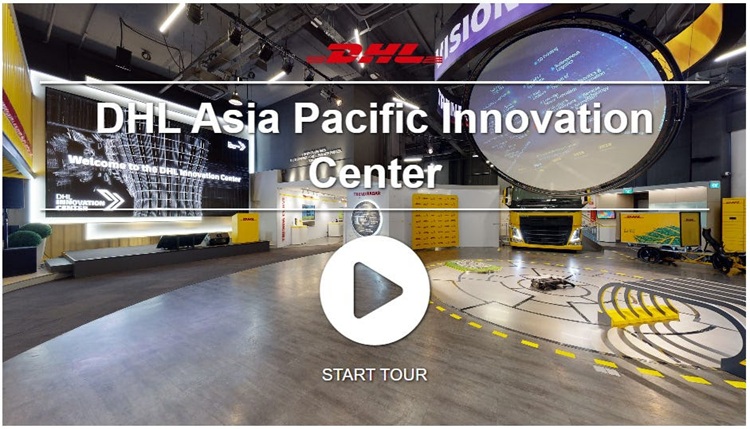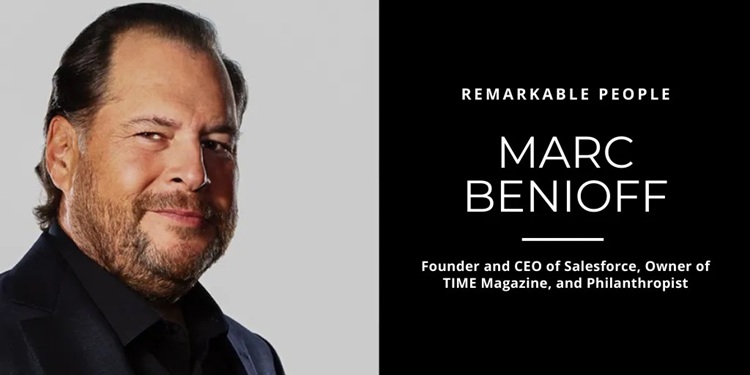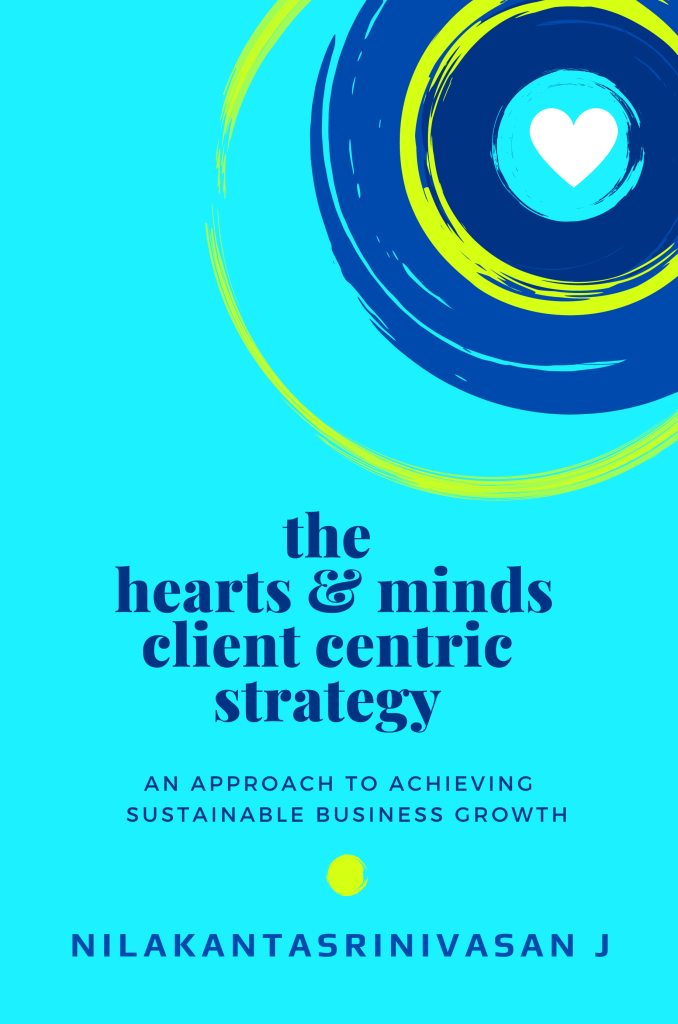Scaling Client-Centricity in B2B is difficult. Here are 6 Challenges and Solutions to address them with live business examples.

In complex B2B environments, growing with your clients means more than adding headcount or markets, it demands rigorous processes, unified branding, and unwavering focus on outcomes. Below, each major roadblock to scaling client-centricity is unpacked with hard data, lived examples, and clear prescriptions for action.
1. Maintaining Service Quality at Scale
As client bases expand, even seasoned teams struggle to deliver the same level of responsiveness and expertise. Studies show 80 percent of B2B buyers rate consistency across touchpoints as critical to loyalty, and nearly 70 percent have walked away from a supplier after a single poor experience.
In practice, AutoDS, a global e-commerce automation platform, saw its support tickets quadruple in six months. By codifying onboarding steps into templated playbooks and deploying a chatbot that resolves 60 percent of routine inquiries, they reduced average resolution time by 40 percent and held CSAT scores at 4.7/5.
Solutions:
- Build detailed process playbooks for onboarding, support, and escalation paths.
- Automate repetitive requests through self-service portals and AI chatbots.
- Implement a customer-health platform (e.g., Gainsight) to track usage, renewals, and risk signals in real time.
- Schedule quarterly “quality retrospectives” to surface gaps before they escalate.
2. Preserving Brand Consistency
Rapid growth across regions and channels often dilutes core messaging, eroding brand trust. According to Lucidpress, organizations with strong brand consistency see revenue increase by up to 33 percent. Without tight governance, local teams drift into bespoke visuals and tone, confusing prospects.
Erase.com, a reputation-management startup, faced this at 50 percent annual growth. They countered by rolling out a centralized brand portal with mandatory style guides, preapproved template libraries, and a Slack-integrated approval bot. The result: a 15 percent uptick in brand-trust survey scores and unified collateral for all global markets.
Solutions:
- Establish a single source of truth for logos, color palettes, typography, and voice.
- Enforce content approvals via workflow tools (e.g., Frontify, Bynder).
- Monitor social and review sites daily with reputation-management software.
- Train every new hire on brand standards during onboarding and annually thereafter.
3. Managing Extended Sales Cycles
Large-ticket B2B deals often stretch six to nine months and involve five to eight stakeholders. This complexity ties up resources, stalls revenue recognition, and jeopardizes momentum. Gartner data indicates only 6 percent of enterprise deals close in under three months, underscoring the drag.
Toyota’s Woven Capital group solves this by investing in promising startups as an anchor client. By co-developing and co-piloting solutions, Toyota not only accelerates proof-of-concept phases by 20 percent but also cements deep strategic relationships before formal contracts. This solution may not be applicable in all scenarios of long sales cycles.
Solutions:
- Leverage corporate venture capital or strategic partnerships to become an early stakeholder in client initiatives.
- Create dedicated “deal acceleration” teams with legal, finance, and product experts on standby.
- Break the procurement cycle into modular pilots that deliver value in 30–60 days.
- Use CPQ (configure-price-quote) tools to streamline approvals and automate contract generation.
4. Communicating Differentiated Value
When firms talk about features rather than outcomes, they drown in a sea of sameness. Demand Gen Report finds 80 percent of B2B buyers say solution-oriented messaging is a key driver of conversion. Yet many organizations default to capability lists.
FMG Leading shifted course by rebuilding its website and sales deck around three core client problems—inefficient onboarding, scattered content, weak adoption metrics—and paired each with a quantified ROI story. Within one quarter, they saw a 30 percent lift in marketing-qualified leads and a 22 percent increase in win rate.
Solutions:
- Center all external assets on client pain points and business impact, not service features.
- Develop a library of succinct case studies highlighting before-and-after metrics.
- Train sales teams in consultative questioning to uncover hidden needs.
- Adopt storytelling frameworks that tie features directly to KPIs (time saved, revenue uplift, risk mitigated).
Free Download
Download your copy of a research report on B2B customer experience practices in India.
Our research is to understand the best practices amongst the enterprises across various sectors in Indian region when it comes to Customer Experience Transformation. Customer Experience as a concept is generally not given the required attention is B2B sector. With increase in the competition in the market, customer experience is one of the major thing which defines the performance of the organization.

5. Delivering Consistent Customer Experiences
Forrester reports that 51 percent of B2B buyers would pay a premium for a superior customer experience. Yet scaling that “delight factor” is notoriously hard when manual handoffs multiply.
OnRamp—a managed-services provider—integrated Gainsight to automate check-in emails, schedule quarterly business reviews, and trigger proactive escalation when usage dipped. They also instituted “client delight” moments: anniversary gifts tied to client milestones. Net Promoter Score climbed from +28 to +47 in nine months.
Solutions:
- Embed voice-of-customer surveys at every lifecycle milestone.
- Automate proactive health-check communications and in-app guidance.
- Curate surprise “delight” touches (e.g., milestone gifts, free advisory sessions).
- Feed feedback directly into product and support roadmaps for rapid iteration.
6. Balancing Innovation with Efficiency
Investing in new offerings without disrupting core operations is a tightrope walk. McKinsey research shows top innovators dedicate 15–20 percent of their R&D budget to exploratory pilots, then scale only the 10 percent that prove out commercially.
IBM’s “Garage” model exemplifies this: autonomous, cross-discipline pods experiment with blockchain, AI, and IoT in six-week sprints. When a prototype gains traction, they plug it into established delivery channels. This structure has yielded 12 new service lines in two years, while keeping legacy offerings on autopilot.
Solutions:
- Spin up small, empowered innovation pods with clear charters, budgets, and success metrics.
- Allocate a fixed percentage of overall resources to experimental projects.
- Use hackathons and internal incubators to surface employee-led ideas.
- Institute a stage-gate review process: innovations that hit agreed milestones get seamless integration into core operations.
By rigorously addressing each challenge with data-backed solutions and proven examples, B2B organizations can transform the complexity of scale into engines of client loyalty and sustainable growth
What are your challenges? Do you need professional help in this area? Contact Us
#nilakantasrinivasan-j #canopus-business-management-group #B2B-client-centric-growth #client-centric-culture #Client-centric-strategies
World Gratitude Day can be the launchpad for an enduring client-centric culture.
Embracing Gratitude as a Strategic Asset
World Gratitude Day on September 21 offers a moment for corporate leaders like you to pause and recognize the people who fuel your success. Gratitude isn’t just a warm feeling-it’s a strategic lever that deepens trust, amplifies loyalty, and ignites referrals. By weaving genuine appreciation into your client engagement playbook, you transform routine transactions into lasting partnerships rooted in mutual respect and shared purpose.
I would like to express my gratitude to you, “Thank you for your trust and partnership-your success inspires everything we do.”

7 Creative Ways to Celebrate Your Clients on World Gratitude Day
1. Spotlight Client Success Stories
Host a “Client of the Month” feature across your newsletter, blog, or intranet. Highlight tangible outcomes-revenue growth, process improvements, user adoption-that your clients have achieved with your partnership. Sharing their wins publicly not only honors their hard work but reinforces your collective impact.
2. Launch a Personalized Video Shout-Out Campaign
Ask your leadership team to record short, candid thank-you videos for top clients. Stitch them into a heartfelt montage and distribute via email or social media. Seeing real faces and hearing authentic messages will resonate far more than templated emails. Use AI to make it creative.
3. Send Handwritten Artisanal Thank-You Notes
Upgrade the traditional greeting card by commissioning a local calligrapher or artisanal stationery house. Include a specific reference-like the campaign you co-launched or the shared milestone you crossed. Elevating the medium shows you’ve invested thought, time, and care.
4. Host a Virtual Client Appreciation Experience
Design a 30- to 45-minute online event with a panel of experts, client roundtables, or a live workshop on a trending industry topic. Offer an interactive Q&A and digital swag. This collective celebration doubles as a learning forum, reinforcing your role as both partner and thought leader.
Free Download
Get your copy of E-Book “The Hearts & Minds Client Centric Strategy” on how to achieve sustainable business growth . It contains cases, examples, detailed implementation approach along with ideas to achieve sustainable growth, especially for B2B firms. (Pages : 51)
5. Amplify Client Voices Through Co-Created Content
Invite clients to co-author blog posts, case studies, or LinkedIn articles that showcase collaborative insights. Position them as industry pioneers, interview them on podcasts, or film on-site profiles. Sharing the spotlight builds their brand while cementing your collaborative identity.
6. Plant a Tree or Donate in Their Name
Align gratitude with purpose by making a charitable gift or planting trees for each client partnership milestone. Present clients with a certificate and map of reforestation efforts. This eco-driven gesture not only expresses thanks but also mirrors your commitment to sustainable impact.
7. Build a Digital Gratitude Wall
Create an interactive microsite or intranet page where employees and clients can post short thank-you notes, GIFs, or images. Integrate social sharing so everyone can rally around the wall. The live feed sparks ongoing engagement long after September 21 has passed.
Measuring Impact and Sustaining Momentum
Capturing the ROI of gratitude initiatives is simpler than you might think. Track metrics such as social media engagement on your thank-you posts, open and click-through rates for campaign emails, Net Promoter Score changes, and referral volumes in the quarter following your World Gratitude Day activities. Share these results internally to galvanize your teams and refine future celebrations.
Turning Gratitude into Growth
World Gratitude Day can be the launchpad for an enduring client-centric culture. Embed one of these initiatives into every quarter’s calendar-rotate the ideas, scale the ones that resonate most, and weave feedback loops directly into your client success processes.
When appreciation becomes a habit rather than a holiday stunt, your clients won’t just stay-they’ll champion your brand, advocate for your solutions, and contribute to an ecosystem of mutual success.
Start planning now, because the authentic connections you build on September 21 will ripple through the rest of the year and beyond.
Which of the 7 ideas do you want to implement this year?
#nilakantasrinivasan-j #canopus-business-management-group #B2B-client-centric-growth #client-centric-culture #World-gratitude-day
Let’s see why L&D Data Maturity Diagnostic Tool is needed? Most L&D teams operate with limited visibility and are only tracking basic metrics like completion rates or satisfaction scores, yet struggling to demonstrate real impact on business outcomes such as retention, productivity, or innovation. Fragmented systems and siloed data are common barriers. LMS platforms, HRIS systems, and performance tools often don’t communicate effectively, making it difficult to generate meaningful insights.

That is why a diagnostic tool is needed that helps pinpoint these integration issues and highlights where data hygiene or governance may be lacking. It’s particularly valuable as organizations shift toward skills-based models, where understanding skill acquisition, mobility, and gaps requires robust, connected data architecture.
Hence, we have created this L&D Data Maturity Diagnostic Tool which is essential for organizations seeking to transform learning from a transactional function into a strategic driver of performance. This tool is built for CHROs, CLOs, and L&D leaders who want a clear, actionable snapshot of their data architecture maturity. It addresses that gap by offering a structured framework to assess how mature an organization’s learning data practices are across five critical dimensions: data integrity, integration, analytics capability, strategic alignment, and governance.
Beyond diagnostics, the tool enables strategic benchmarking, allowing organizations to compare their maturity level internally or against industry peers. It facilitates gap analysis and prioritization, helping leaders identify where to invest in platforms, analytics capabilities, or cross-functional collaboration. By guiding teams from basic reporting toward predictive analytics and AI-driven personalization, it lays the foundation for a data-driven L&D strategy.
Importantly, the tool also fosters leadership alignment. It gives CHROs, CLOs, and CFOs a shared language to discuss learning strategy, justify investments, and mitigate risks, especially in regulated industries where data governance is paramount. Whether the goal is to improve compliance, elevate workforce planning, or unlock performance insights, the L&D Data Maturity Diagnostic Tool provides a clear roadmap for transformation.
Key Elements of the L&D Data Maturity Diagnostic Tool
- Data Integrity: Evaluates the accuracy, consistency, and reliability of learning data. Ensures that data sources are trustworthy and free from duplication or errors.
- Integration: Assesses how well learning data is connected across systems such as LMS, HRIS, and performance platforms. Identifies silos and opportunities for interoperability.
- Analytics Capability: Measures the organization’s ability to analyze learning data—from basic reporting to advanced predictive analytics. Highlights the tools and skills needed to extract actionable insights.
- Strategic Alignment: Examines how learning data supports broader business goals. Determines whether L&D metrics are linked to outcomes like productivity, retention, or innovation.
- Governance: Reviews policies, standards, and accountability structures for managing learning data. Addresses compliance, privacy, and data stewardship.
| Register to our online “L&D Data Analytics for Learning Professionals” certification course. Visit course page for information Here |
Rate your organization on each dimension from Level 1 (Basic) to Level 4 (Advanced). Tally your scores to identify your overall maturity level and pinpoint areas for improvement.
1. Data Collection & Integrity
| Level | Description |
| Level 1 | Only basic data collected (completions, attendance, satisfaction). No validation or standardization. |
| Level 2 | Some structured data (e.g., scores, feedback) with partial validation. Inconsistent formats. |
| Level 3 | Standardized data collection across platforms. Includes behavioral and performance-linked data. |
| Level 4 | Comprehensive, validated, and real-time data capture. Includes xAPI, LRS, and metadata tagging. |
2. Data Integration & Accessibility
| Level | Description |
| Level 1 | Data is siloed across LMS, HRIS, and other systems. Manual exports required. |
| Level 2 | Partial integration between systems. Some automated reporting. |
| Level 3 | Centralized dashboards with cross-platform data. Role-based access enabled. |
| Level 4 | Fully integrated architecture with APIs, real-time sync, and enterprise-wide accessibility. |
3. Analytics Capability
| Level | Description |
| Level 1 | Descriptive metrics only (e.g., how many completed). No analysis. |
| Level 2 | Basic comparisons and trend analysis. Limited cohort segmentation. |
| Level 3 | Diagnostic and correlation analysis (e.g., training vs performance). |
| Level 4 | Predictive and prescriptive analytics. AI/ML used for personalization and forecasting. |
4. Strategic Alignment
| Level | Description |
| Level 1 | Learning metrics not linked to business outcomes. No strategic reporting. |
| Level 2 | Some alignment with KPIs (e.g., compliance, onboarding). |
| Level 3 | Learning data informs workforce planning and capability building. |
| Level 4 | L&D data drives strategic decisions (e.g., talent mobility, innovation readiness). |
5. Governance & Leadership Engagement
| Level | Description |
| Level 1 | No formal data governance. Leadership not involved in L&D analytics. |
| Level 2 | Ad hoc governance. Some executive interest in dashboards. |
| Level 3 | Defined data policies. CHRO/CLO review learning impact regularly. |
| Level 4 | Governance embedded in enterprise data strategy. CHRO/CLO co-own L&D data architecture. |
Scoring Method
- Assign a score of 1 for Level 1, 2 for Level 2 and so on.
- Add all the scores for 5 themes and you will get the total score
- The interpretation of the total score is given below.
#nilakantasrinivasan-j #canopus-business-management-group #B2B-client-centric-growth #client-centric-culture #L&D-Analytics #Data-Analytics #L&D-Data-Maturity-Diagnostic-Tool

How Second-Order Thinking Drives Strategic B2B Growth and Competitive Advantage
What feels like a smart investment today may become a burden tomorrow. In general, decisions that look like victories in the moment can quietly turn into setbacks down the line.
Second-order thinking is the practice of looking beyond immediate outcomes to anticipate indirect, delayed, and compounding effects of decisions.
What is Second-Order Thinking?
Second-order thinking is a mental model, a practice of looking beyond immediate consequences to anticipate the indirect, delayed, and compounding effects of decisions. Instead of asking “What happens now?”, it asks “What happens next—and then what?” This deeper layer of analysis helps avoid unintended consequences and uncovers hidden opportunities.
This mental model can be applied in our everyday life.
Here is a everyday example.
Imagine you decide to eat a unhealthy snack, when you’re hungry:
- First-order: You satisfy your hunger instantly.
- Second-order: You gain a few grams of weight, feel a bit sleepy, and postpone an important task.
- Third-order: After weeks of daily that snack, your clothes no longer fit and your project deadlines slip.
- Fourth-order: Over years, you face health issues, incur medical costs, and compromise long-term goals.
In today’s hyper-connected, fast-moving marketplace, second-order thinking gives leaders the X-ray vision to spot hidden risks and opportunities beyond the obvious.
For example, the Transformative Innovation Policy Consortium (TIPC) ran a dedicated Second-Order Learning (SOL) research project during the COVID-19 pandemic. Between May and December 2020, TIPC—led by Alejandra Boni of INGENIO (CSIC-UPV)—brought together diverse researchers and practitioners to reflexively explore how the crisis acted as a landscape shock, driving double-loop learning that challenged core assumptions and informed sustainability transitions.
In business, when you’re tempted by a quick ROI from a new technology rollout, a market expansion, or a cost-cutting reorg, it’s easy to cheer the immediate gains and ignore the domino effects—rising vendor lock-in, shifting customer expectations, or internal culture stress. By mapping out those ripples two, three, or four steps ahead, you safeguard against unintended blowbacks, strengthen stakeholder trust, and craft strategies that hold up under tomorrow’s pressures. In a world where yesterday’s breakthrough can become today’s liability, that long-game perspective isn’t optional—it’s your competitive lifeline.
Netflix Example
In 2011, Netflix announced a plan to split its DVD and streaming services under a new brand (“Qwikster”). First-order thinking focused on operational clarity. Second-order thinkers anticipated brand confusion, subscriber backlash, and accelerated churn. Recognizing these ripple effects, Netflix rapidly reversed the decision—preserving customer trust and averting a deeper crisis.
When to use Second-Order Thinking in Business?
There are innumerable scenarios for applying the second-order thinking in Business. To get started, here are a few important business decisions where it comes handy.
- Technology rollouts (to identify data, security, and change-management implications)
- Major pricing changes (to foresee churn, brand impact, upsell potential)
- Product launches (to anticipate support, training, and ecosystem effects)
- M&A and partnerships (to map cultural integration, regulatory scrutiny, and talent shifts)
History of Second-Order Thinking
The concept of looking multiple steps ahead was formalized in investing circles by Howard Marks in his book The Most Important Thing (2011), where he calls it second-level thinking. Shane Parrish later popularized it under the name “second-order thinking,” crediting thinkers like Ray Dalio and Charlie Munger for championing the mindset of “And then what?”.
Many iconic leaders like Jeff Bezos, Warren Buffett, Charlie Munger, Bill Gates, Elon Musk and Steve Jobs embed this mental model into their decision processes.
Business Scenario Application
Decision : You roll out a 20% discount on your core subscription plan to accelerate sign-ups.
First-Order Effects
- Surge in new customer acquisitions
- Quick uplift in MRR (monthly recurring revenue)
Second-Order Effects
- Margin compression as discounted seats lower average revenue per user (ARPU)
- Existing customers feel slighted, increasing support tickets and complaints
- New customers sign up for the discount only, then churn when price resets
- Premium tiers lose appeal if the lower tier offers too much value, stunting upsell growth
Mitigation (via Second-Order Thinking)
- Time-box the discount and communicate clear end dates to preserve ARPU
- Bundle value-add services (onboarding, training) to offset margin impact
- Introduce “discounted” and “core” cohorts in billing systems to monitor churn difference
Use this simple structure for any of your important decision (given with above example):

Is there a Third-Order Thinking?
Third-order thinking moves beyond first-order (immediate outcomes) and second-order (downstream ripples) to examine how systems themselves evolve. It asks: when our actions reshape the broader landscape, how do new rules, norms, and networks emerge as a result?
Let’s take the example of automating a production process.
- First-Order: Production speed doubles.
- Second-Order: Headcount falls, upskilling on automation becomes a priority.
- Third-Order: Vocational schools revise curricula, trade unions lobby for new labor laws, and aftermarket service providers reinvent subscription models to support advanced robotics.
#nilakantasrinivasan-j #canopus-business-management-group #B2B-client-centric-growth #client-centric-culture #Netflix #TIPC #SOL #B2B-Growth
Learning dashboards are essential tools for aligning Learning & Development (L&D) initiatives with business strategy, talent development, and organizational performance. They provide visibility into the effectiveness, reach, and impact of learning programs—enabling data-driven decisions, continuous improvement, and strategic workforce planning.

Here’s a comprehensive breakdown of L&D metrics, grouped logically, with notes on industry-specific relevance and strategic value:
Learning Engagement Metrics
These metrics assess learner participation, motivation, and interaction with content.
| Metric | Description | Strategic Value |
| Enrollment Rate | % of target audience enrolled in a program | Indicates relevance and reach |
| Completion Rate | % of learners who finish the course | Signals learner commitment and content quality |
| Drop-off Rate | % of learners who exit before completion | Helps identify friction points |
| Repeat Participation | Learners returning for additional courses | Reflects learner satisfaction and value |
| Session Attendance | For live or blended programs | Useful for tracking real-time engagement |
In regulated industries (e.g., pharma, aviation), tracking mandatory compliance training completion is critical.
Learning Effectiveness Metrics
These measure how well learning objectives are achieved.
| Metric | Description | Strategic Value |
| Pre- and Post-Assessment Scores | Knowledge gain through learning | Validates instructional design |
| Skill Acquisition Rate | % of learners demonstrating new skills | Links learning to capability building |
| Behavior Change Indicators | Observable changes in workplace behavior | Supports culture and performance shifts |
| Application Rate | % of learners applying skills on the job | Connects learning to business impact |
| Feedback Ratings | Learner satisfaction and perceived value | Guides content and delivery improvements |
In tech and consulting, tracking skill acquisition in emerging domains (e.g., AI, cybersecurity) is vital for competitiveness.
Learning Experience Metrics
These focus on the quality and accessibility of the learning journey.
| Metric | Description | Strategic Value |
| Net Promoter Score (NPS) | Learner likelihood to recommend | Gauges brand and experience quality |
| Time to Completion | Average time taken to finish a course | Helps optimize course design |
| Accessibility Score | Usability across devices and formats | Ensures inclusive learning |
| Content Relevance Score | Learner-rated alignment with job roles | Improves personalization and targeting |
Organizational Impact Metrics
These link learning to business outcomes and talent strategy.
| Metric | Description | Strategic Value |
| Productivity Uplift | Change in output post-training | Quantifies ROI of learning |
| Employee Retention Rate | Correlation with learning participation | Supports talent retention strategy |
| Internal Mobility Rate | % of learners promoted or transferred | Indicates career growth enablement |
| Time to Competency | Time taken for new hires to reach proficiency | Accelerates onboarding and performance |
| Learning ROI | Cost vs. business impact of programs | Justifies L&D investment |
In manufacturing and logistics, tracking safety training impact on incident reduction is key.
Financial & Operational Metrics
These help manage L&D budgets and resource allocation.
| Metric | Description | Strategic Value |
| Cost per Learner | Total spend divided by number of learners | Enables budget optimization |
| Learning Hours per Employee | Average time spent learning | Benchmarks learning culture |
| Utilization Rate | % of available learning resources used | Improves resource planning |
| Program Scalability | Ability to expand learning reach | Supports growth and agility |
Strategic Alignment Metrics
These ensure L&D is aligned with business goals and workforce planning.
| Metric | Description | Strategic Value |
| Learning Needs Coverage | % of identified skill gaps addressed | Aligns with strategic workforce planning |
| Strategic Skill Index | % of workforce trained in priority skills | Supports transformation and innovation |
| Leadership Pipeline Strength | % of high-potential employees in development | Builds future-ready leadership |
| Compliance Alignment | % of programs mapped to regulatory needs | Reduces risk and ensures audit readiness |
Free Download
Contains data file used in data cleaning tutorial. Can be downloaded for your practice.
Of all the steps in Analytics, data cleaning & preparation plays a very crucial for the success of the entire exercise. In fact, if not done well, it can sabotage the whole objective. Through this video (https://youtu.be/dxTesoAbb10) and practice file here, you will get hands-on practice on a routine used to clean & prepare data. For convenience, we will work with a complex data set by reasonably small in size.

In finance and healthcare, compliance alignment is non-negotiable due to regulatory scrutiny.
L&D Metrics as a Driver of Business Growth & Talent Strategy
- Data-Driven Decisions: Prioritize programs that deliver measurable impact and improve areas that require help
- Agility & Innovation: Tracking emerging skill development supports digital transformation and market responsiveness.
- Retention & Engagement: Learning metrics correlate with employee satisfaction, reducing churn and boosting morale.
- Leadership Development: Monitoring pipeline strength ensures succession planning and strategic continuity.
- Compliance & Risk Mitigation: Industry-specific metrics safeguard against regulatory breaches and reputational damage.
- Operational Efficiency: Financial metrics help optimize spend and scale learning across geographies and functions.
#nilakantasrinivasan-j #canopus-business-management-group #B2B-client-centric-growth #client-centric-culture #L&D #Learning-Analytics

Traditional L&D has data deficit
Historically, Learning & Development (L&D) has operated more as a support function than a strategic one. It is focused on delivering training rather than measuring its impact. This legacy mindset has led to minimal investment in data infrastructure. According to the Learning and Performance Institute, over 50% of L&D professionals lack confidence in using data effectively, and performance impact analytics ranks among the lowest skills in the field.
There are several factors that contribute to this data scarcity:
- Most L&D teams measure only metrics like completion rates, satisfaction scores, which don’t reflect actual learning transfer or business impact.
- L&D teams are often staffed with instructional designers and facilitators and not data analysts.
- LMS are designed for delivery and not analytics.
- Data is siloed across HRIS, LMS, and performance systems, making integration complex.
The result is that L&D struggles to demonstrate ROI, personalize learning, or align with business strategy.
Traditional L&D Data Collected is just not enough
Most L&D functions collect only basic operational data such as:
- Course completions
- Assessment scores
- Learner feedback
- Training hours logged
While these are useful for tracking activity, this data lacks depth. It doesn’t answer any of the following questions that business leaders pose:
- Did the training improve performance?
- Which skills were actually acquired?
- How does learning correlate with business KPIs?
A 2022 study by Cognota found that only 44% of organizations track learner analytics, and fewer than 20% use predictive or prescriptive analytics. Without richer data—like pre/post performance, behavioral change, or skill application, L&D remains reactive and disconnected from strategic outcomes.
Four Levels of Maturity in L&D Data Architecture
If organizations have to evolve from this situation, there needs a more structured vision from CHROs and CLOs (Chief Learning Officers). There are 4 distinct stages of data maturity in L&D that are important to consider. Evaluate where your organization stacks against this.
Level 1: Basic Measurement
- Tracks completions, attendance, and satisfaction.
- No analysis or strategic linkage.
- Example: “4,000 employees completed the compliance module.”
Level 2: Data Evaluation
- Begins to assess effectiveness.
- Compares metrics across cohorts or time.
- Example: “Sales onboarding completion rates rose 20% after redesign.”
Level 3: Advanced Evaluation
- Explores causal relationships.
- Links learning to performance outcomes.
- Example: “Customer satisfaction improved 12% in teams with leadership training.”
Level 4: Predictive & Prescriptive Analytics
- Uses data to forecast outcomes and guide decisions.
- Enables personalization and strategic alignment.
- Example: “Employees with X learning path are 3x more likely to be promoted within 12 months”.
Unfortunately, only 7% of organizations currently operate at Level 4 maturity, while 81% remain in Levels 1–2, according to Watershed’s global survey.
Free Download
Contains data file used in data cleaning tutorial. Can be downloaded for your practice.
Of all the steps in Analytics, data cleaning & preparation plays a very crucial for the success of the entire exercise. In fact, if not done well, it can sabotage the whole objective. Through this video (https://youtu.be/dxTesoAbb10) and practice file here, you will get hands-on practice on a routine used to clean & prepare data. For convenience, we will work with a complex data set by reasonably small in size.

Strategic Insights Enabled by Clean, Comprehensive L&D Data
When data hygiene and architecture are robust, L&D becomes a strategic engine. Here’s how Chief Learning Officers can add value to the business with good data architecture.
- Skill Gap Analysis : Identify which roles or teams lack critical capabilities. For example, a global logistics firm used xAPI data to map skill gaps across 12 regions, enabling targeted upskilling.
- Learning ROI Measurement : Link training to performance metrics (e.g., sales, retention). For example, Caterpillar tracked spikes in video training usage during crises and adjusted licensing to meet demand.
- Personalized Learning Paths : Recommend content based on role, performance, and goals. For example, a tech firm used learner behavior data to reduce onboarding time by 30%.
- Program Optimization : Refine content based on engagement and outcomes. For example, Reviewing top-performing leadership modules led to a 40% increase in manager satisfaction scores.
- Strategic Alignment : Align learning with business priorities (e.g., innovation, compliance). For example, a bank linked training data to customer service KPIs, improving NPS by 15%.
The Role of CHRO and Chief Learning Officer
To unlock L&D’s full potential, data architecture must be a C-suite priority. The CHRO and Chief Learning Officer (CLO) play pivotal roles. The CHRO ensures integration with HR systems, workforce planning, and talent analytics and champion data governance and cross-functional collaboration. The CLO defines the learning strategy, selects analytics tools, and builds data literacy within L&D teams.
Together, they must:
- Establish a data strategy aligned with business goals.
- Invest in platforms that support xAPI, LRS, and advanced analytics.
- Upskill teams in data interpretation and storytelling.
- Foster a culture of evidence-based decision-making.
As IBM’s Chief Data Officer’s Playbook notes, organizations with mature data leadership are 1.9x more likely to outperform competitors. In L&D, that means moving from “training delivery” to “capability acceleration.”
#nilakantasrinivasan-j #canopus-business-management-group #B2B-client-centric-growth #client-centric-culture #L&D #Learning-Analytics
Artificial Intelligence is transforming how companies measure learning. It’s helping L&D teams move beyond tracking completions to showing real business impact. In business terms, it is helping in improving Time to Proficiency (How fast learners reach job-ready capability), Behavior Change, Uplift in revenue, quality, or customer satisfaction, Internal promotions, reduced attrition and a lot of time and money saved through AI-generated content.

AI Trends for L&D – Use Cases
Here are a few common AI trends in 2025 for L&D:
Hyper-Personalized Learning at Scale
AI can tailor learning paths based on role, skill level, and performance data. For example, IBM uses AI to recommend personalized learning journeys aligned to employees’ career goals and current skill gaps. This approach has helped accelerate upskilling in emerging tech roles and improve learner engagement.
AI is moving beyond basic personalization to hyper-personalized learning journeys. Platforms like Coursera and EdCast now use real-time performance data, learner preferences, and career goals to dynamically adjust content and delivery formats. This ensures relevance and improves engagement across diverse roles and geographies.
Adaptive Learning Systems
Tools like Area9 Lyceum and Smart Sparrow are enabling adaptive learning that responds instantly to learner inputs. These systems adjust difficulty, pacing, and content based on real-time performance, making training more intuitive and effective—especially for technical upskilling and compliance.
Immersive AI-Driven Learning
AI is powering immersive learning experiences through AR, VR, and XR. Walmart uses VR simulations to prepare employees for high-pressure retail scenarios, while healthcare organizations use AR to train surgical procedures. These environments are increasingly integrated with AI to provide real-time feedback and scenario adaptation.
Predictive Analytics
AI can forecast who’s likely to struggle, succeed, or drop out—and suggest timely interventions. GE Healthcare applies predictive models to identify technicians at risk of failing compliance training, then delivers targeted refreshers. This has led to a measurable drop in audit failures and non-compliance incidents.
Real-World Behavior Tracking
AI can analyze outputs from actual work—like sales calls, support tickets, or code commits—to determine whether training is being applied. Gong, for instance, analyzes sales conversations to assess how well reps apply objection-handling techniques taught in training. The company has shown a clear link between targeted learning and improved win rates.
Learning in the Flow of Work
AI is embedding learning into everyday tools like Slack, Teams, and CRM systems. Microlearning modules and nudges are delivered contextually—when and where employees need them—reducing friction and increasing adoption. This trend is especially strong in sales enablement and customer support
AI-Augmented Soft Skills Development
Soft skills like empathy, adaptability, and communication are now being developed through AI-powered simulations and peer feedback systems. Salesforce, for example, uses gamified role-play scenarios to train sales teams on emotional intelligence and negotiation.
Faster Content Creation
Generative AI can draft quizzes, videos, and simulations, and tag them by skill or role. Coursera uses AI to accelerate course development by auto-generating assessments and tagging content by competency level. This has shortened production cycles and improved learner targeting.
AI-Powered Content Localization
Natural language processing tools like DeepL are being used to automatically translate and localize training content for global audiences. This reduces manual effort and ensures cultural relevance, making learning more inclusive and scalable.
Scalable Qualitative Analysis
AI can summarize thousands of survey comments or coaching notes to uncover common themes. Accenture uses natural language processing to analyze feedback from global learning programs, helping them quickly identify areas for improvement and adjust content accordingly.
Skills-First Learning Strategies
Organizations are shifting from job-based training to skills-first development. AI helps map existing capabilities, identify gaps, and recommend horizontal skill clusters (e.g., leadership, problem-solving) that apply across roles. This supports internal mobility and future-proofing of talent.
We help organizations leverage data and analytics in decision making. To know more, click HERE
Do you need professional help in this area? Contact us
Real-Time ROI Measurement
Advanced learning analytics platforms now offer dashboards that track learner progress, engagement, and performance in real time. This allows L&D teams to link training directly to business outcomes—such as productivity, retention, and revenue—and refine strategies accordingly.
More Use Cases Across Functions
| Function | AI Use Case Example | Company Example | Business Metric Impact |
| Sales Enablement | Analyze call data, recommend practice, track win rate changes | Gong, Salesforce | Win rate, deal size |
| Customer Support | Identify skill gaps from ticket data, push in-console tips | Zendesk, ServiceNow | First-contact resolution, CSAT |
| Compliance Training | Tailor scenarios based on risk profile, track policy adherence | GE Healthcare, PwC | Incident reduction, audit scores |
| Leadership Coaching | Summarize 1:1 feedback, personalize leader journeys | Accenture, Google | Retention, team engagement |
| Product/Engineering | Recommend code quality lessons based on PR reviews | GitHub, Atlassian | Defect rate, cycle time |
Common Industry Challenges
- Data Privacy and Consent: Using performance data or transcripts requires clear consent and strong governance. Microsoft, for example, enforces strict privacy protocols when analyzing employee feedback and performance data. Companies must explain what data is used, why it’s collected, and how it’s protected.
- Bias in Recommendations: AI can reflect biases in training data, which may disadvantage certain groups. LinkedIn regularly audits its AI-driven learning recommendations to ensure fairness across gender and geography. Testing for bias and keeping humans in the loop is essential.
- Over-Automation: AI should support—not replace—human judgment. Deloitte uses AI to suggest coaching prompts, but managers retain control over final decisions. This balance ensures that automation enhances, rather than overrides, human insight.
- Explainability: If AI influences promotions or certifications, it must be explainable. SAP uses transparent scoring models for AI-driven assessments and allows manual overrides. Choosing tools with clear logic and override options builds trust and accountability.
- Regulatory Compliance : Laws like GDPR and the EU AI Act require careful handling of personal data. Siemens built its AI learning systems with GDPR compliance from the ground up, ensuring that data flows are documented and legally reviewed before rollout.
AI won’t fix weak learning strategies, but it can help you prove what works, faster. The key is to start small, measure clearly, and build trust through transparency.
#nilakantasrinivasan-j #canopus-business-management-group #B2B-client-centric-growth #client-centric-culture #L&D #Learning-Analytics #Accenture #Google #GitHub #GEHealthcare #PwC #Salesforce #Gong #Zendesk #Servicenow #sales-enablement #Leadership-coaching
Learn to create SOAR Matrix with live business examples
In today’s high-stakes B2B landscape, predicting change isn’t enough — leading it is the mandate. Yet too often, most organizations approach strategic planning like a checklist driven activity.
Further, most strategic planning processes lay too much emphasis on aspects such as threats, weaknesses and risks. While it is important to evaluate the deficiencies and challenges, overly emphasizing on these leads to the creation of defensive strategies.

That’s where the SOAR Matrix flips the narrative.
SOAR—short for Strengths, Opportunities, Aspirations, and Results—is a strategic planning framework built for businesses that want to scale with intention and impact. Unlike its better-known cousin SWOT, SOAR doesn’t dwell on what’s broken—it amplifies what works and focuses on what’s possible.
It’s not just another planning tool; it’s a mindset shift for teams obsessed with client success, long-term value creation, and cross-functional alignment.
What is the SOAR Framework?
- Strengths: What the organization does well—core competencies, assets, and achievements
- Opportunities: External possibilities for growth, innovation, or market expansion
- Aspirations: Vision for the future—what the organization wants to become
- Results: Tangible outcomes that measure success and progress toward aspirations
Which organizations use SOAR Matrix?
There are many organizations that use SOAR matrix in their strategic decision making process. For example, Visa, John Deere, British Aerospace (BAE systems), US Army and many such large enterprises regularly use SOAR analysis. Many large consulting firms like McKinsey, Deloitte, PWC, Accenture, KPMG, etc, also this framework for their engagements.
Why leaders should use SOAR more regularly?
SOAR is useful because it doesn’t just analyze—it inspires. It’s built for leaders and teams who want more than situational diagnosis. By focusing on strengths and possibilities, SOAR aligns stakeholders, drives engagement, and fosters a growth mindset across organizations.
SOAR need not be used only a year during strategic planning. It should be part a leader’s tool-kit and should be during every day decision making. Here’s why it is a powerful tool for leaders:
- Encourages forward-thinking and innovation rather than deficiency mindset
- Builds shared vision and emotional commitment of the team
- Facilitates goal-setting rooted in core capabilities
- Strengthens organizational culture and collaboration towards a winning spirit
- Simple storytelling framework for leaders to influence stakeholders
When should B2B firms use SOAR?
SOAR is especially valuable in the following growth-critical scenarios:
- Cross-functional alignment for long-term goal
- Launching new product lines based on client feedback
- Entering new geographies or verticals with client co-creation
- Aligning cross-departmental teams with strategic account goals
- Conducting quarterly business reviews or renewal planning
- Repositioning brand for premium, value-based growth
- Designing CX programs tied to sales KPI
- Organizational transformation or culture change
- Leadership retreats and strategic offsites
How to Conduct a Client-Centric SOAR Analysis?
Conducting a SOAR analysis isn’t really difficult. All you need is good facilitation skills.
- Gather key stakeholders from diverse functions—strategy, marketing, operations, leadership, etc.
- If needed, you can involve key client decision makers too
- Host a facilitated workshop
- Ask 3 questions:
- What do we do best?
- What future excites us?
- What success looks like?
- Draft insights for each quadrant of the SOAR Matrix
As a part of our strategic engagements with our clients, we facilitate and help our clients develop SOAR matrix.
TESLA and NVIDIA Examples
Here are a few SOAR matrix examples of Tesla and NVIDIA that I have created for you to understand the concept better.
SOAR Matrix Example 1 : Tesla’s Entry into India
Here’s how Tesla’s move into India can be framed with a growth lens.
Strengths
- Globally recognized brand with premium EV tech
- Experience in setting up Gigafactories
- Advanced autonomous systems and battery innovation
- Charismatic leadership with global influence
Opportunities
- India’s EV market projected to reach ₹35 lakh crore by 2035
- Government incentives like FAME-II and import duty concessions
- Rising urbanization and affluent middle class
- Potential for Indian Gigafactory as Southeast Asia export hub
Aspirations
- Become the leading premium EV brand in India
- Build a Gigafactory with 30% local value addition
- Launch an affordable EV tailored for Indian consumers
- Revolutionize India’s EV infrastructure and perception
Results
- Launch India-specific EV model by 2026
- Onboard 8,000 EVs annually under new import quota
- Achieve ₹7,500 crore turnover within five years
- Maintain NPS score above 70% across service touchpoints
SOAR Matrix Example 2 : NVIDIA’s AI Chip Strategy
NVIDIA’s dominance is built on a powerful combination of hardware innovation, software integration, and ecosystem control. However, rising competition from AMD, Intel, and custom silicon players (like Google’s TPU) is prompting NVIDIA to accelerate its roadmap and deepen client entrenchment.
Strengths
- Market leadership with 70–95% share in AI accelerators
- Flagship chips (H100, A100) widely adopted by tech giants like Google, Microsoft, and Amazon
- Proprietary CUDA software ecosystem creates developer lock-in
- High gross margins (~78%) and strong brand equity
Opportunities
- Surging demand for generative AI and LLM training
- Expansion into inference chips and edge AI devices
- Strategic partnerships with cloud providers and enterprise AI platforms
- Growth in simulation, robotics, and Omniverse applications
Aspirations
- Sustain innovation leadership by releasing new architectures annually
- Become the backbone of global AI infrastructure across industries
- Lead ethical AI development and energy-efficient chip design
- Expand AI Enterprise software adoption across Fortune 500 clients
Results
- Reduce energy consumption per training cycle by 30% over 3 years
- Launch next-gen chip architecture (post-H100) by Q2 2026
- Achieve 85%+ market share in inference chips by 2027
- Grow AI Enterprise revenue by 40% YoY
Do you need professional help in this area? Contact us
#nilakantasrinivasan-j #canopus-business-management-group #B2B-client-centric-growth #client-centric-culture #Tesla #NVIDIA #SOAR-Matrix #Intel #Google
In today’s hyper-competitive B2B landscape, client-centricity isn’t just a buzzword—it’s a growth engine. But embedding it into the fabric of your organization takes more than good intentions. It requires bold strategies, real-world experimentation, and a willingness to embrace both the upsides and the trade-offs. Here are five distinctive approaches that leading companies use to put clients at the center which foster client-centric culture —along with the lessons they’ve learned along the way.
1. Co-Create the Client Journey—Don’t Just Map It
Forget static journey maps built in boardrooms. The real magic happens when clients help design the experience themselves. DHL’s Innovation Centers are a masterclass in this approach. By inviting clients into co-creation workshops, DHL has developed cutting-edge logistics solutions—from parcelcopter drones to AR-powered warehouses. These sessions aren’t just about feedback—they’re about partnership, trust, and shared innovation.
Co-creation builds loyalty and unlocks solutions you’d never find alone. Clients feel heard, valued, and invested. But it’s not without its challenges. Co-creation demands time, facilitation skill, and a tolerance for ambiguity. Not every client is ready—or equipped—to ideate at this level, and not every idea will be viable. Still, when done right, the payoff is transformative.

2. Train Every Team in Client Empathy
Client-centricity isn’t the job of sales alone. When finance, ops, and engineering understand client pain points, the entire organization becomes more responsive. Salesforce’s “Customer360” enablement program immerses cross-functional teams in real client stories. Through empathy labs and role-play exercises, even backend teams learn to “walk in the client’s shoes.” The result? Products and processes that reflect real-world needs—not internal assumptions.
The benefit is clear: empathy drives relevance. Teams become more agile, more aligned, and more attuned to what clients actually care about. But the downside is that empathy training can feel abstract or performative if not tied to real decisions. Without leadership reinforcement and follow-through, it risks becoming a one-off workshop rather than a cultural shift. The key is to embed empathy into daily rituals—not just annual events.
3. Measure What Matters to Clients
Vanity metrics like clicks and impressions don’t drive growth. Client-centric companies track what truly matters—like how fast clients see value or how well their goals are met. HubSpot, for example, ditched superficial KPIs in favor of metrics like “Time to First Value” and “Customer Success Score.” These helped pinpoint onboarding friction and improve retention—leading to stronger client relationships and higher lifetime value.
With right metrics, you get clarity on what drives real impact. These metrics align internal teams around client outcomes, not internal outputs. But the challenge lies in data complexity and cultural inertia. Shifting from traditional KPIs to client-centric ones requires retooling dashboards, retraining teams, and sometimes confronting uncomfortable truths. It’s worth it—but it’s not plug-and-play.
4. Embed Living Client Personas in Every Decision
Static personas belong in dusty decks. The best companies use dynamic, data-driven personas that evolve with client behavior—and influence every strategic move. IBM’s Automatic Persona Generation (APG) system creates real-time personas based on client data. These aren’t just marketing tools—they’re embedded into product development, pricing, and campaign design. It’s empathy at scale, powered by analytics.
Living personas help teams anticipate needs, personalize experiences, and make faster, smarter decisions. But there’s a trade-off: data dependency. If your inputs are flawed or biased, your personas will be too. And over-reliance on algorithms can dilute the human nuance that clients value. The best approach blends data with dialogue—quantitative insight with qualitative empathy.
5. Turn Clients into Innovation Partners
The most client-centric companies don’t just serve clients—they innovate with them. Amazon’s Lab126 invites select clients and partners to co-develop products like Kindle and Echo. Early feedback shapes design and functionality, making clients feel like collaborators—not just consumers. This model deepens trust and accelerates market fit.
With this strategy, you reduce guesswork and build solutions clients actually want. Innovation becomes faster, more targeted, and more inclusive. But the risk is scope creep and misalignment. Not every client idea fits your strategy, and not every partnership scales. Managing expectations—and protecting core vision—is essential. Still, when clients become co-innovators, the relationship transcends transaction.
Client-centricity isn’t a department—it’s a mindset!
These five strategies show how leading B2B firms embed it across every touchpoint, metric, and decision. Each approach comes with its own rewards and realities. But together, they form a blueprint for growth that’s grounded in empathy, powered by data, and shaped by collaboration.
Whether you’re in Manufacturing & Industrial, IT, SaaS, Tech, ITES, logistics, or consulting, the path to relevance starts with one question:
“What would our clients build—if they were in our shoes?”
Do you need professional help in this area? Contact us
#nilakantasrinivasan-j #canopus-business-management-group #B2B-client-centric-growth #client-centric-culture #DHL
Did you know using emojis improves business results!
We celebrate World Emoji Day today – July 17.
The first emoji was created in 1999 by Shigetaka Kurita, a Japanese designer working for the mobile communications company NTT DoCoMo. He created emojis to make digital communication more expressive and intuitive. He designed a set of 176 pixelated icons—each just 12×12 pixels. Since then, Emojis have now evolved.

Shigetaka Kurita (Source:CNN)
Have you ever wondered the role of Emoji in humanizing business communications in this digital age?
In a landscape dominated by metrics, data dashboards, and ROI spreadsheets, the humble emoji now plays a prominent role in the world of B2B messaging. What began as a millennial shorthand has quietly evolved into a strategic tool for client-centric growth professionals, seeking to infuse humanity, clarity, and nuance into their communications.
The Shift: From Formal to Feelings
B2B messaging has long been formal, brimming with jargons, and dense proposal decks. But today’s millennial client is increasingly digital, discerning, and emotionally attuned. As a result, Emojis are now a shorthand for tone, intention, and empathy. A simple or can soften the tone, signal positivity, or break the monotony of corporate dialogue.
This shift isn’t about being casual or cool, it’s about being emotionally intelligent.
Emojis also save time!

The Emoji Business Impact
Do Emoji’s really make any difference when it comes to business results?
- Emojis function like punctuation with personality. They clarify sentiment, flag urgency, reducing ambiguity in communication.
- Studies show that emails and social posts with relevant emojis often outperform their plain-text counterparts in open rates and click-throughs rates. For example,
- Email open rates increase by up to 29% when emojis are used in subject lines.
- Social media posts with emojis see 25% to 60% more engagement on Twitter, Instagram and Facebook
- Push notifications with emojis are opened 85% more often than those without

Tips for Usage
- Use sparingly for impact — avoid overloading messages.
- Match tone to context: What feels engaging in a Slack ping may feel off in a proposal.
- Emojis can humanize insights: try summarizing performance with 3 emojis.
- Keep cultural sensitivity in mind — meanings vary globally.
- A/B Test Subject lines with emojis to evaluate impact.
- Create Brand Emoji Guidelines to ensure consistency across departments and regions.

Using Emojis across Platforms
Emails (Outlook, Gmail, etc.)
Windows Emoji Picker
- Shortcut: Press
Windows + .(period) orWindows + ;(semicolon) - Works in Outlook, Gmail (browser), and most text fields
- Lets you search and insert emojis instantly
Outlook Add-ins
- Go to Home > Get Add-ins
- Search for “Emoji” and install add-ins like Emoji Keyboard or EmojiOne
- Adds a toolbar for quick emoji access 43dcd9a7-70db-4a1f-b0ae-981daa16205 Click Here
Excel
Keyboard Shortcut
- Use
Windows + .to open emoji picker directly in a cell 43dcd9a7-70db-4a1f-b0ae-981daa162054
Insert as Image
- Use
Insert > Picturesto add emoji images - Or use the
IMAGE()function with emoji URLs:
=IMAGE(“https://emoji.beeimg.com//64/twitter”)
PowerPoint
Insert Tab
- Go to
Insert > Emoji(or useWindows + .) - Emojis appear in full color and scale well for slides43dcd9a7-70db-4a1f-b0ae-981daa162054
Symbol Dialog
Insert > Symbol > More Symbols- Choose font: Segoe UI Emoji
- Browse and insert emojis manually43dcd9a7-70db-4a1f-b0ae-981daa162054

Cool Emoji Ideas to implement
Emoji-as-KPI Experiment
- Sum up last quarter’s performance using just 3 emojis
- Use this to open dialogue around storytelling with dashboards. Invite your team to share their emoji KPIs!

Build Your B2B Mood Board
- Use emoji palettes to enrich communication internally and externally.
- Conduct Emoji usage training programs
- Conduct surveys with emojis instead of rating scales
- Use emojis to give feedback after reviews
- Capture employee sentiments with emojis
- Have employees identify themselves with a emoji persona

As B2B grows more human-centric, the rise of emojis signals an evolution — not a dilution — of professional communication. These tiny symbols remind us that behind every metric is a person. And in a noisy world, sometimes all it takes is a to spark a meaningful connection.
#nilakantasrinivasan-j #canopus-business-management-group #B2B-client-centric-growth #Emoji-Day #Shigetaka-Kurita #NTT-DoCoMo
Who should be the first salesperson of your company and why?
I want to start by describing the profile of the CEO of a B2B company. He’s a technical genius and holds a couple of patents. He possesses deep-tech expertise. His growth philosophy is based on technical excellence and operational efficiency. Unfortunately, ever since he took over, the company hasn’t seen a big break. They have been lurking below their competitors in spite of superior technology. He grills his BD team day in and day out.
But the real problem is something else. It’s his mindset. He doesn’t believe that he is the “First Salesperson of his Company”. In fact, he doesn’t believe he is accountable for sales. He hardly engages with clients or prospects. Instead, he prefers to delegate client interactions to his BD team. Of course, he reviews them a lot, but he never picks up the phone and talks to a client. Neither does he voluntarily schedule visits to clients. His philosophy is that if there is a problem with clients, bring it to me. Yes, he digs deep and spends hours on technical reviews when a client complains. In fact, he tells his clients, “I’m available 24×7. Call me any time!” Clients do call him to escalate, and they fire him, and he’s always on the receiving end. Going by the Pavlovian principle of classic conditioning, every time the client calls, he’s stressed and passes it all down the line.
We consider the head of any country to be the first among equals, the first citizen. The CEO of any organization is the First Salesperson of that Company. This is even more pertinent for B2B, as sales and marketing are largely a matter of human-to-human connection.
First Salesperson of that Company – Exemplars
On the contrary, let’s consider the leadership style of Marc Benioff, co-founder of Salesforce. He is known for his hands-on approach to sales and marketing and for actively engaging with customers. In one instance, when a major potential client expressed doubts about the security and reliability of Salesforce’s cloud platform, Benioff didn’t just rely on his sales team to address the concerns. Instead, he personally met with the client’s executives, listened to their concerns, and provided detailed explanations about the robustness of Salesforce’s infrastructure and the benefits of moving to a cloud-based CRM system.

Image credit : Guykawasaki.com
Marc Benioff’s hands-on approach to sales, his persistence in overcoming challenges, and his growth mindset pushed the boundaries of not only his company but the tech industry as a whole. Under Benioff’s leadership, Salesforce introduced the concept of subscription-based pricing for enterprise software, which departed from the traditional perpetual license model. This approach made enterprise-level CRM accessible to companies of all sizes, democratizing access to powerful business tools.
Benioff is not an exception. Larry Ellison, co-founder and former CEO of Oracle Corporation, was renowned for his aggressive sales tactics and direct involvement in major sales negotiations. In Oracle’s early years, Ellison took on the role of chief salesman, leveraging his industry connections and technical expertise to win over large corporate clients for Oracle’s database solutions.
Benioff and Larry are exemplary examples of the first salespersons of their company.
Without the First Salesperson, a company suffers the following consequences:.
- Brand Perception: A lack of sales focus can harm the company’s reputation and brand perception, making it harder to attract and retain customers.
- Weak Relationships: Strong customer relationships are crucial in B2B sales. If the CEO is not involved in or supportive of sales efforts, the company may fail to build and maintain strong customer relationships.
- Low Motivation: Sales teams often look to the CEO for inspiration and leadership. If the CEO doesn’t prioritize sales, it can lead to low morale and motivation among sales personnel.
- Competitive Disadvantage: Competitors with strong sales leadership will likely outperform a company with weak sales accountability, resulting in a loss of market share.
Ideal First Salesperson of a Company – What will he do?
Here are some things that the First Salesperson of a Company will do:
- Take ownership and accountability for sales and marketing rather than delegating it to the BD head.
- Active client engagement, such as regular and voluntary interactions with key stakeholders, rapport building and strategic conversations, visits, etc.
- Excellent and grass-roots-level understanding of the strengths and weaknesses of the products and services of your organization vis-à-vis competition
- Knowledge of market dynamics and nuisances
- Active participation in sales processes such as marketing campaigns, lead generation, client presentations, negotiations, and onboarding
- Good personal rapport with sales and marketing team members
As a simple rule, if the CEO of a B2B company spends more than 50% of his time on the above activities, there is nothing stopping their growth. But the unfortunate reality is that they spend time reviewing decks after decks, interviewing candidates for non-strategic positions, troubleshooting issues, and having hours of board room discussions about various strategies.
Here’s what we do with Sales Transformation for B2B companies
#nilakantasrinivasan-j #canopus-business-management-group #B2B-client-centric-growth #Marc-Benioff #Salesforce
And how it benefits B2B organizations in achieving client centric growth
If I tell you that one thing you focus on can give you a 13% increase in profit margins, not only that, it can also lift customer loyalty by 8%, and what’s more, your products can grow two times faster; would you be interested in it?
A resounding yes, right!
What is it? It’s Sustainability.
The points above illustrate that sustainability is not just a moral imperative but also a strategic advantage for B2B organizations focused on client-centric growth.
For example, Microsoft, being a large B2B enterprise, has committed to and benefited from sustainability. Nike is another large consumer brand that has gone gung-ho on sustainability.
They have laid out 10 Principles for Circular Designs for creating sustainable products that I think many of us can imitate for the good of the world and for business benefits too. I’m really impressed by the simplistic appeal of the principles.

Nike’s 10 Principles of Circular Designs
Let’s see, what are they?
- Material Choices: Selecting low-impact materials that use pre- and post-consumer recycled content. As a result, Nike has increased the use of recycled materials, such as in their Flyknit products, that are made from yarn made from recycled plastic bottles.
- Cyclability: Designing products that can be easily recycled at the end of their life. For example, Nike’s Space Hippie shoes are made from recycled materials and are designed to be disassembled and recycled again.
- Waste Avoidance: Minimizing waste during the production process. For example, Nike’s Move to Zero initiative has significantly reduced manufacturing waste, with many facilities achieving zero waste to landfill status. Their Flyleather is made from at least 50% recycled natural leather fiber, reducing waste from leather manufacturing.
- Disassembly: Creating products that can be easily taken apart for recycling or repair. Nike’s ISPA (Improvise, Scavenge, Protect, Adapt) line features shoes that can be disassembled to replace worn-out parts.
- Refurbishment: Designing products that can be refurbished and given a second life. Nike’s Refurbished program takes gently worn shoes, cleans them, and resells them at a lower price.
- Green Chemistry: Using safer chemicals in the production process. Nike’s commitment to green chemistry includes eliminating hazardous chemicals from their supply chain, thereby improving safety for workers and reducing environmental impact.
- Durability: Creating long-lasting products to reduce the need for frequent replacements. Nike’s Air Max shoes are known for their durability and long lifespan.
- Versatility: Designing products that can be used in multiple ways or for different purposes. Nike’s Tech Pack collection features versatile clothing that can be worn in various settings.
- Packaging: Reducing the environmental impact of packaging. Nike’s Move to Zero initiative includes using recycled materials for shoe boxes and reducing packaging waste.
- New Models: Innovating new business models that promote sustainability. Nike’s subscription service for kids’ shoes, Nike Adventure Club, allows parents to return outgrown shoes for recycling.
Role of Design Thinking in creating the 10 Principles
Interestingly, Design Thinking played a crucial role in creating Nike’s 10 Principles of Circular Design by fostering a user-centered, innovative, and iterative approach. Here’s how Nike used Design Thinking:
- Empathy: Understanding the needs and challenges of both consumers and the environment. Nike engaged with athletes, designers, and sustainability experts to identify key issues and opportunities.
- Define: Clearly articulating the problem of environmental impact and waste in the fashion industry. This step helped Nike focus on creating solutions that address these specific challenges.
- Ideate: Generating a wide range of ideas for sustainable design. Nike collaborated with institutions like Central Saint Martins to brainstorm and develop innovative concepts.
- Prototype: Creating tangible prototypes to test and refine ideas. For example, Nike’s Flyknit and Space Hippie shoes were developed through multiple iterations to ensure they met sustainability goals.
- Test: Evaluating prototypes with real users and gathering feedback. Nike tested their products with athletes and consumers to ensure they were both functional and sustainable.
- Iterate: Continuously improving designs based on feedback and new insights. Nike’s commitment to sustainability involves regularly revisiting and refining their principles and products.
I feel only because Nike applied Design Thinking they were able to create a comprehensive set of principles that guide their efforts towards circularity and sustainability. Design thinking framework is really an underutilized framework for many B2B organizations that has a lot of potential for driving business growth.
Here’s what we do with Design Thinking for B2B companies
#nilakantasrinivasan-j #canopus-business-management-group #B2B-client-centric-growth #Nike #Nike-circular-designs #design-thinking
Sign-up for collaborat newsletter



